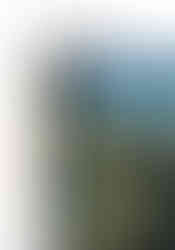Search
COOLWALL® Featured In Journal Of Architectural Coatings
- Tex-Cote LLC

- Mar 31, 2007
- 2 min read
Updated: Aug 8, 2023
TEX•COTE®’s COOLWALL® System was recently highlighted in an article on green-building coatings featured in the April/ May issue of the Journal of Architectural Coatings magazine.
COOL WALL JOINS ROOF AS DEMAND GROW FOR CLIMATE CHANGE IN BUILDING AND DESIGN
In the warp-speed-evolving world of green and sustainable building and design, cool is hot.
Translation: Building designers and owners everywhere are hot on the trail of materials and technologies that help keep buildings cool inside when the temperature outside is on the rise. In this global anti-warming climate of design, descriptors such as “white,””reflective,” ad “cool roof” evoke warm and fuzzy feelings about a building’s performance in the context of energy usage.
The building roof has served as the focal point of most heat-deflecting paint and coating technologies, but a migration to other assemblies is a likely progression, by means of advanced materials that promise to ease the impact of solar radiation on building-interior temperatures.
Cool roof, meet your new partner on the green-building coatings team - the cool wall.
Textured Coatings of America, Inc., Panama City, FL, says the infrared-reflective (IR) exterior coating, TEX•COTE® SUPER•COTE™ COOL WALL™ has been shown to take some the edge off the effect of hot weather on energy demand -- to the tune of a nearly 22% reduction in air-conditioning demand in one comparison demonstration.
The waterborne, high-build acrylic coating product was put to the test in a program carried out by Oak Ridge National Laboratory’s Building Envelope Group. In the testing, the exteriors of adjacent buildings in three different locations — southern Arizona, northern Florida, and eastern Tennessee — were pointed with two types of exterior coatings, one of them the COOL WALL reflective product.
Andre Desjarlais, group leader of the Oak Ridge Building Envelope Group, says the results of the testing indicated that the IR coating product exhibited reflectivity that was about 25 points higher than the conventional “control” coating used for comparison. Desjarlais said the effects on energy demand climates with greater solar radiation revealed a more dramatic difference between the reflective and conventional products.
Desjarlais added that the reflective coatings were also shown to generate a greater effect in keeping building interiors cooler when applied to wall assemblies with insulation. The effect was not as dramatic — energy savings of 10% of less — in building assemblies with insulation that meets current code guidelines.
The IR coating formula contains less than 150 grams per liter (g/L) of VOCs, a level that meets the limits listed in the Green Seal GS 11 standard for paint and coatings. Also offered is a version of the product that meets a 50 g/L VOC limit of the South Coat Air Quality Management District (SCAQMD) in California. A typical coating system includes a smooth or textured primer and IR coating topcoat. The cooling can be used on concrete, masonry, brick, and previously painted substrates of other types.













Comments